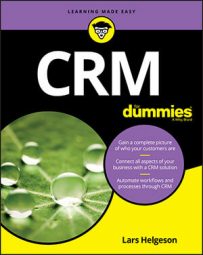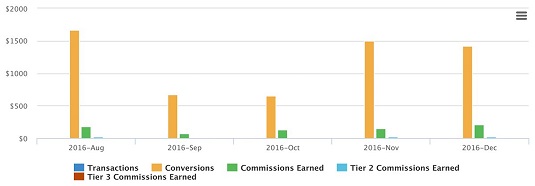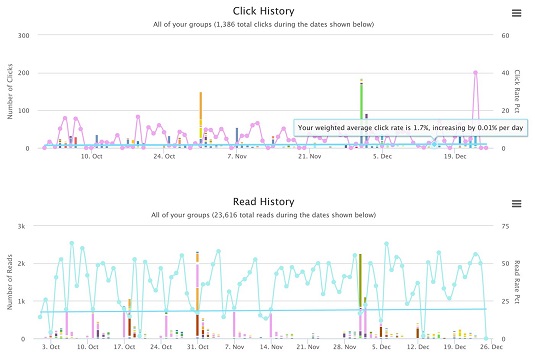Selling to the business (B2B) with opportunities
Opportunities are a way to track complex sales, usually business-to-business sales. Consumer sales funnels can track similar progressions without the details typically found with opportunities.Because opportunities are separate objects attached to contacts or companies, you can store more information about the sale. Usually this information takes the form of these data fields:
- Title and description: General descriptor fields for easy recall.
- Products and/or services: What you’re selling in this opportunity.
- Proposal due date: The date when the potential customer requires a proposal due for the effort you will perform.
- Close date: The date when you will find out if you won or lost the deal.
- Phase: Many opportunities go through various phases from initial conversation to requirements review to proposal submission and review to final disposition (winning or losing the deal).
- Source: How you found out about the opportunity.
- Quality: A subjective assessment for the quality of the opportunity. Usually this assessment is correlated to the size of the opportunity, relationship with the potential client, and ability to meet the requirement.
- Chance to close: The percentage chance you will win the deal. Use this number in forecasting.
- Fulfillment dates: The dates you will be working on the opportunity.
When tracking opportunities, a salesperson sells fewer high-value items. Opportunities are designed for a more detailed look at every individual sale. Oftentimes, they involve multiple components, with multiple products and services bundled together. There are often a series of defined phases the opportunity moves through, such as:
- Prospect
- Qualified lead
- Proposal
- Negotiation
- Deal won/lost
Opportunities, like this one, store a lot of information with them to keep a record of the ongoing relationship of the sale.
Opportunities are where the synergy of Complete CRM and integrated marketing and operations starts to show its power. If you’re a salesperson working on an opportunity, and you can see when your lead opens emails, clicks through your website, and watches videos, you can take immediate, targeted action. This knowledge is power and opens doors that your sales team never thought possible.
You can also forecast what will happen in the future when your sales team enters in predicted close dates and chances to close those deals. Here is a simple chart that shows the value of deals closed and some deals predicted to close.
Selling to consumers with funnels
Funnels are an easy way to visualize the sales process you want to manage. At each step, fewer people remain, with the bottom of the funnel representing the people who have purchased your product or service. It’s up to you to determine when someone moves to a new phase in the buying process.Check out this funnel for opportunities. Opportunity funnels look similar to consumer sales funnels.
- Sales funnels are a great way to track the progress of many people through your buying process. When you track a greater number of people in your marketing and sales process, it can be a useful tool for managing the business-to-consumer (B2C) buying model. Instead of salespeople manually moving an opportunity through phases, you can automate this process, moving people through your funnel as they hit certain milestones. These milestones can be:
- Visiting a webpage
- Filling out a form
- Hitting a thank-you page after the form
- Buying a product
- Reviewing your product
This image shows how a lead capture form starts the B2B funnel. After someone fills out and submits the form, he is entered into the first stage of the funnel.
Measuring key metrics
Conversion rates through each stage are important metrics to watch. It’s important to look at what is affecting those conversion rates, as leads look for different things as they progress through their buyer journeys.Every B2B sales process has metrics you can measure to help you understand how your business is performing. Some examples are
- Time in each stage: Are your leads taking too much time to advance? Can you do something to push them along?
- Percentage of leads dropping: Are you finding a large number of leads leaving the buyer journey at a particular point? Find out why and address those pain points.
- Number of CRM activities: Are your salespeople spending an inordinate amount of time with each lead to get them through a part of the buyer journey? Can automated communication streamline the way you do business?
Separate the individual accounts from higher-value leads with opportunities. With opportunities, you can track which leads show interest, when they get a demo, when they get a trial account, and when they convert. You can watch percentages of close rates for each of these, as they represent lead quality, the ability to educate leads, and salesperson performance.
Evolving your sales and conversion processes
Your organization must continually refine and improve your sales process to remain competitive. Sales management must monitor funnels continuously and watch for sudden changes.If changes occur, up or down, in the rate of conversion from one stage to the next, or in the amount of time it takes to convert someone, there may be other forces at work. Use your group analysis and related CRM data to identify common threads between people who are abandoning their buyer journeys.





